Whether its pure serenity, play spots for kids, or a buzzing backdrop of bars, the sheer variety of Croatia’s beaches is simply astounding.
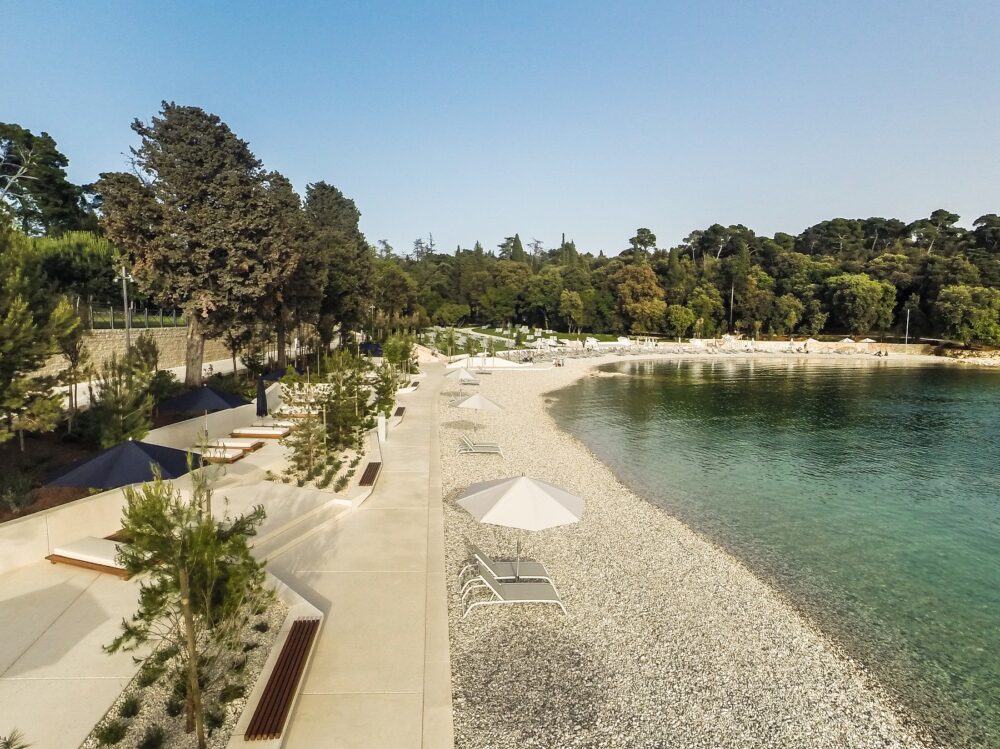
Mulini Beach (Photo: Maistra Hotels & Resorts)
The country’s long, rugged Adriatic coastline, fringed by more than 1,000 islands, attracts huge numbers of visitors every year, many of whom are drawn here by the dazzling array of sun-kissed beaches. Their smooth pebbles, or in some cases fine shingle, contrast with the typical sandy beaches of Croatia’s European counterparts – but there’s one thing they share in common: an abundance of character and charm. Some are nestled in secluded bays, virtually untouched, with others backing onto bustling beach towns, but wherever you may be, you’re never far from one of these blissful shorelines. Here are 20 of the most charming, ordered from north to south.
Mulini Beach (Rovinj)
Perched in the southern reaches of achingly-pretty Rovinj on the Istrian peninsula, Milini Beach is an alluring stretch of rocky, pebbly shore that sits behind a beautifully landscaped promenade. A popular spot for watching the area’s famous sunsets each evening, the beach’s white stone is kissed by the Mediterranean sun, while surrounding greenery adds to the visual spectacle. Small pebbles make for a gentle entrance to the azure blue waters and the colourful facades of Rovinj’s old town add to the backdrop. Nearby is a cocktail bar, plus several restaurants and art galleries.
Amarin Beach (Rovinj)
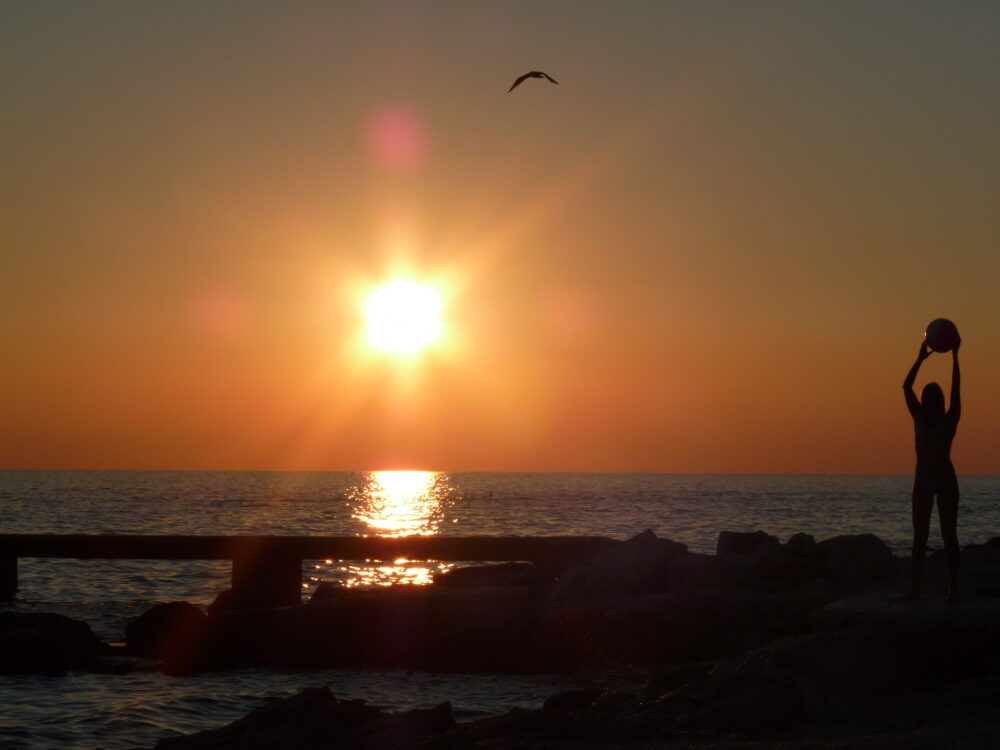
Amarin Beach (Photo: FMD_Photos via Flickr)
Snorkelling, banana boat rides, jet ski rentals, beach volleyball, paddleboard and kayak rentals, and a choice of two inflatable aquaparks are just some of the fun-filled activities available to sun-seekers visiting the Blue Flag-accredited Amarin Beach. Situated 3km north of the picture-perfect town of Rovinj on the Istrian peninsula, and stretching out across some 500 metres of Croatian coast, the fine shingle shoreline is skirted by clear and calm aquamarine waters that are ideal for families with kids to swim in. While much of the beach is reserved for guests at the award-winning Amarin Resort that sits behind it, the rest is open for public access.
Vela Plaza Beach (Baska)
Sitting in a wide, sheltered bay in the tourist town of Baska on the island of Krk, located between the Istrian peninsula and the northern Croatian Littoral mainland, this hugely popular two-kilometre beach has proudly flown its “Blue Flag” since 1999. Giving onto shallow, turquoise sea and backed by a promenade sprinkled with cafés, restaurants, and hotels, the bustling beach is lined with sunbeds and umbrellas and offers water-based activities including jet skiing, parasailing, and scuba diving, while small children can happily paddle in the shallow shores of its sandy sections.
Hawaii Beach (Verudela)
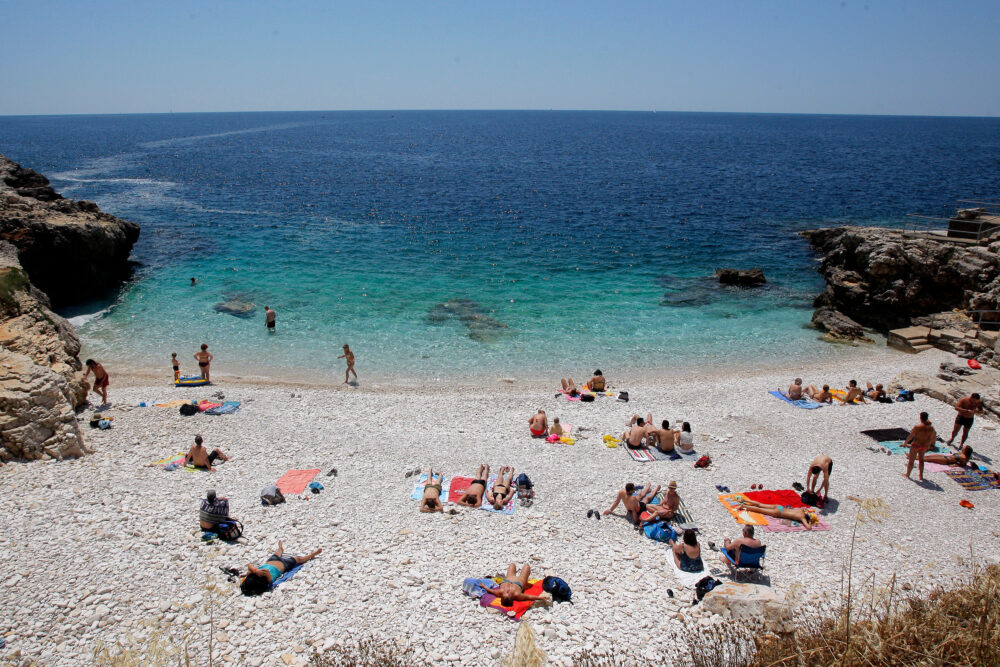
Hawaii Beach (Photo: Tourism Office Pula)
Across all of Croatia, there are few places to match the seafront city of Pula, situated on the tip of the Istrian Peninsula, for its sheer number of beautiful beaches. And among the very finest is Hawaii Beach, which owes its name to the famously high waves that crash against the shoreline and are reminiscent of those seen in Hawaii. But it’s the sensational scenery that draws crowds to this tiny pebble beach in a picturesque bay on the Veruda peninsula, which is surrounded by cliffs and accessible down a carved staircase. What’s more, a gradual, soft entrance to the sea via a strip of shallow water makes it family-friendly, too, with intrepid kids enjoying the chance to jump the cascading ocean waves, and clamber across the large, rocky boulders that flank the bay.
Sveti Ivan Beach (Lubenice)
Remote and largely untouched, the pristine island of Cres, one of the string of islands in the Istria Peninsula on the Kvarner Gulf, is best known for its sheep farming and griffon vultures. Perched on the island’s west coast is the hilltop city of Lubenice, a hotch-potch of medieval stone cottages and quaint chapels. From here, a steep and meandering footpath leads down to a secluded bay where walkers are greeted by a blissful white-pebble beach offering arresting vistas across the Adriatic. Also visible from here is the Blue Cave, which is open for visitors to swim into, in the nearby Žanje Bay. There are no provisions at the beach or nearby, so visitors should pack accordingly.
Njive Beach (Premantura)
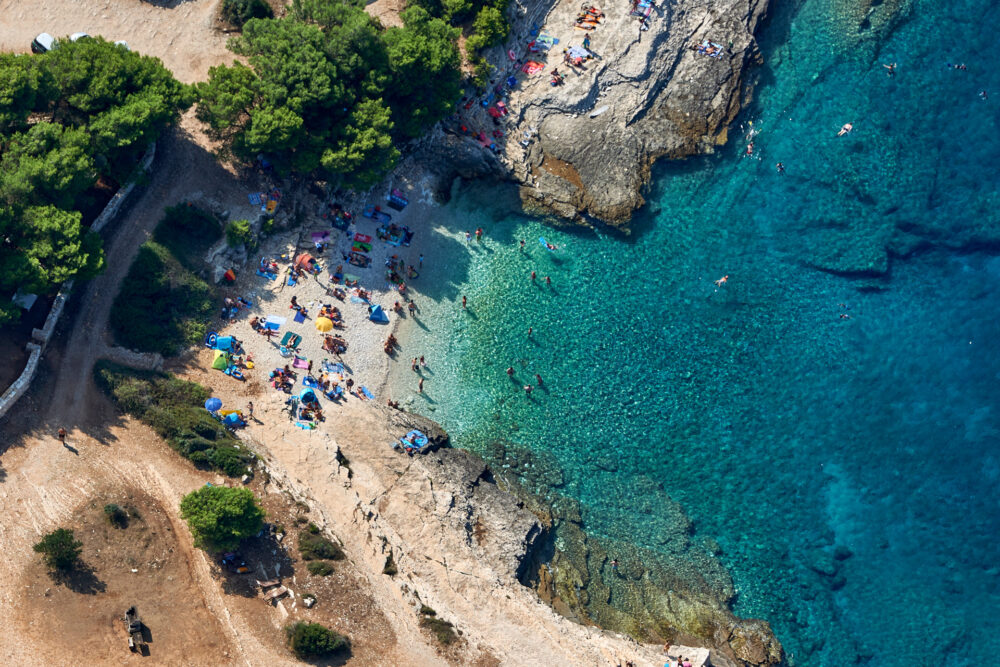
Njive Beach (Photo: TZ Medulin)
On the western side of Cape Kamenjak in the Istrian village of Premantura can be found one of the area’s most enchanting pebble beaches. Sloping gently down to a deep swimming area ringed by cliffs, the beach is set within a picturesque, secluded cove with great views of the surrounding cliffsides and the abundance of pine trees that offer beach-goers shaded respite from the sun. There’s also a well-stocked beach bar serving a wide range of drinks and snacks, and for the ultimate in beachside indulgence there’s the chance to visit a massage house located just off the shore.
Paradise Beach (Lopar)
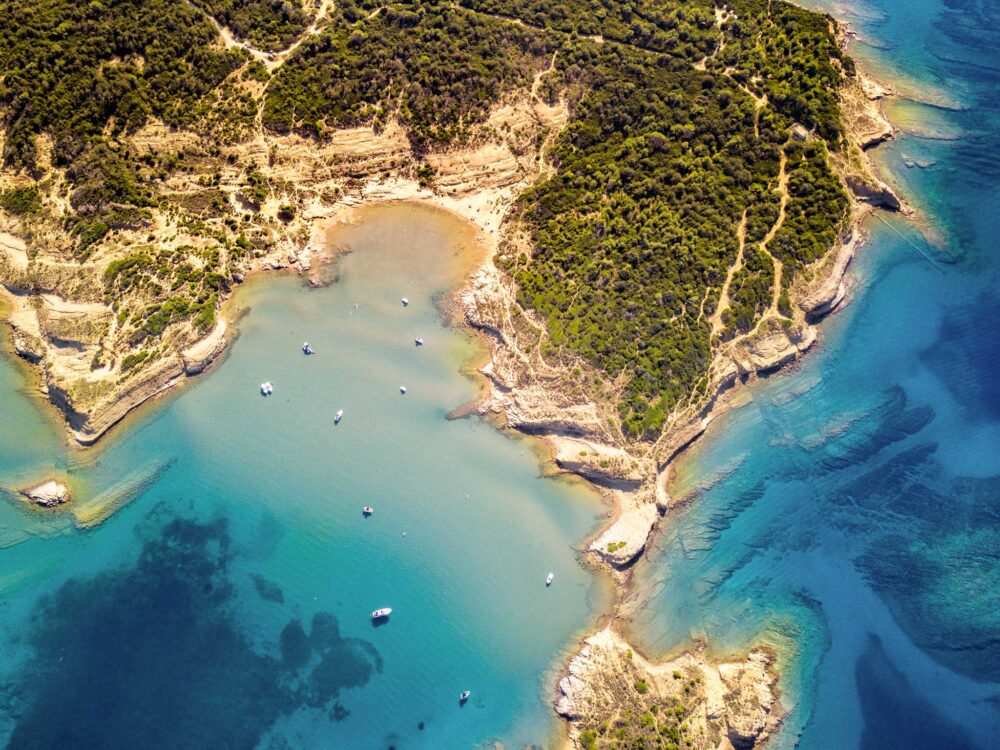
Paradise Beach (Photo: Turistička zajednica Općine Lopar)
The largest and most famous beach of Lopar on the island of Rab, positioned off Croatia’s northern coastline, the fine golden sands of Paradise Beach draw a steady stream of sun-seekers throughout the year. Over a mile long, the Blue Flag beach extends around a delightful bay and offers tons of fun activities, from beach volleyball, to aquaparks, parasailing and beach parties. The beach hardly shelves as it leads out into the warm Adriatic sea, and a small offshore island makes for a great swimming or kayaking spot. Backing onto the beach are all sorts of attractions, including minigolf and ice-cream parlours.
Spiăza Beach (Susak Island)
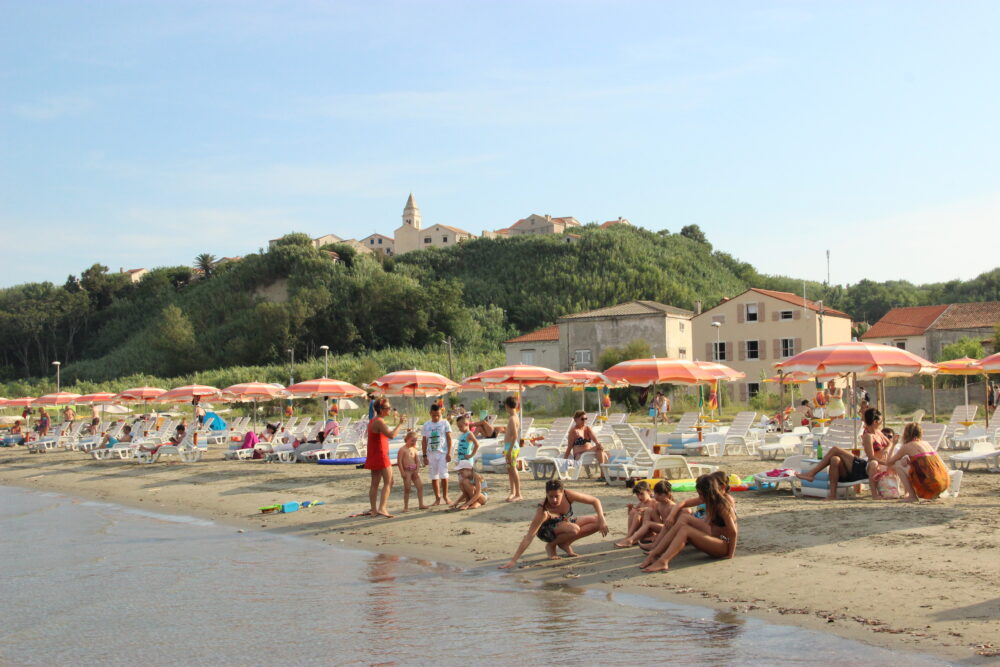
Spiăza Beach (Photo: Visit Losinj)
Sometimes referred to as Sand Island due to the sandy foundations on which it was created, the small island of Susak off of Croatia’s northern Adriatic coastline is home to two notable beaches. Of the pair, commonly considered the most beautiful is Spiăza, which is set within the island’s largest bay and is home to soft sand and shallow waters that make it a particularly popular spot with families. On the foot-friendly sandy surface, beach volleyball is a favourite activity with those with energy to spare and you can also rent pedal boats to take out onto the serene ocean. Several restaurants and cafes are also walkable in minutes.
Kraljičina Beach (Nin)
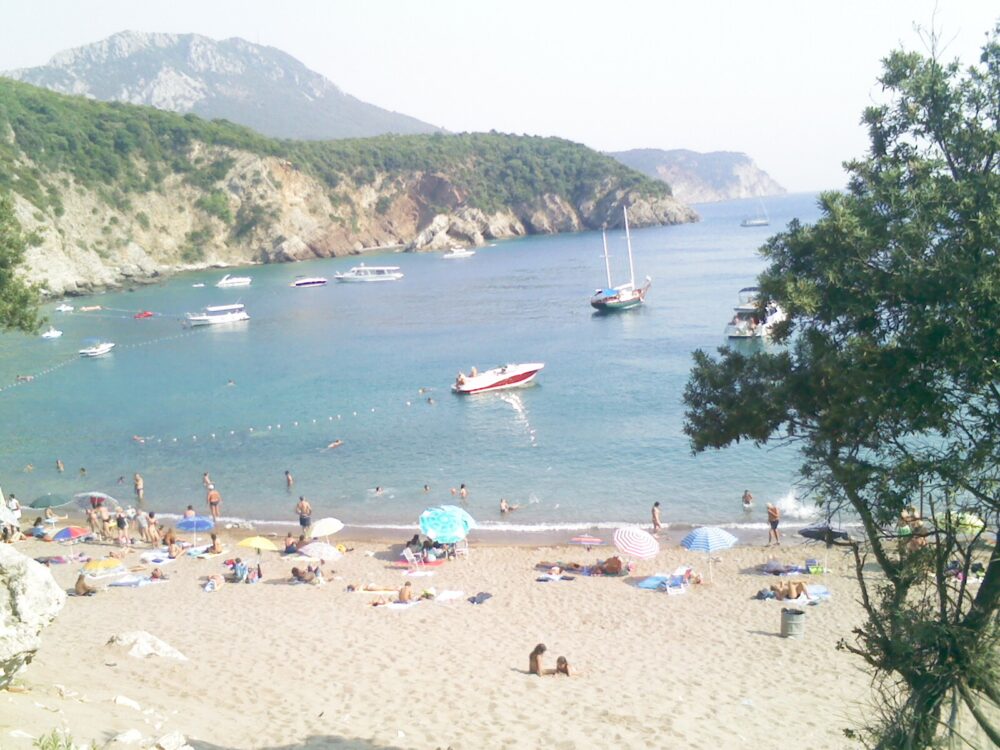
Kraljičina Beach (Photo: SrdjanRadovic99 via Flickr / CC BY-ND 2.0)
A fifteen-kilometre coastal drive north of the tourist hot spot of Zadar on the Dalmatian coast lies the small town of Nin. Here, Kraljičina Beach (translated as ‘Queen’s Beach’) lays claim to being among the best beaches anywhere in Croatia owing to the sensational views it affords of the Nin lagoon, the shallow drops into the warm sea, and its smooth and silky sand. A volleyball court and several beach bars offer fun and variety for adults, and those with wellness in mind like to bathe in the famously natural healing mud that is said to have many therapeutic benefits for the body.
Sakarun Beach (Dugi Otok Island)

Sakarun Beach (Photo: Danielis Yachting via Flickr / CC BY-ND 2.0)
A popular excursion from the city of Zadar on the Dalmatian coast, Sakarun Beach on Dugi Otok Island is commonly hailed as one of Croatia’s most enticing beaches – and it’s easy to see why. Tucked away in a dreamlike bay, the beach’s relative seclusion, reachable via a 1.5-hour ferry and then a car ride from the mainland, has helped it avoid the tourism masses of other parts of the country, allowing visitors to enjoy its fine white sand and striking surroundings in relative peace. Mediterranean-scented pine forests line the beach and provide cool shade while, despite its setting on the ocean seas, the protection of the long bay keeps the water pleasantly warm.
Bačvice Beach (Split)
One of Croatia’s most popular tourism centres, the coastal city of Split in Dalmatia is home to one of the few sandy stretches anywhere in the country. The result is packed crowds during peak season – but don’t let that put you off. Bačvice Beach is a captivating place to be, particularly for families, with the shallow waters and soft sand ideal for children. It’s also a prime spot for watching a recreational ball game known as picigin, which is played in ankle-deep water and adapted from water polo in the early 20th century. Come evening time, a younger crowd descends to make the most of the area’s myriad of nightspots.
Stračinska Beach (Solta Island)
Lesser-known than the neighbouring islands of Hvar and Brač, Solta in the central Dalmatian archipelago is arguably no less pleasing on the eye. And to most who have been here, the rugged island’s jewel in the crown is Stračinska Beach. Situated on a tranquil bay that can be reached via boat or on by bicycle on land, the beach enjoys a dreamily secluded setting, with a backdrop of soothing cricket chatter and the sea lightly splashing against the shoreline serving up the perfect antidote if you’re based in a city. Encircled by rocks and low bush, it’s also a great spot for swimming.
Zlatni Rat Beach (Bol)
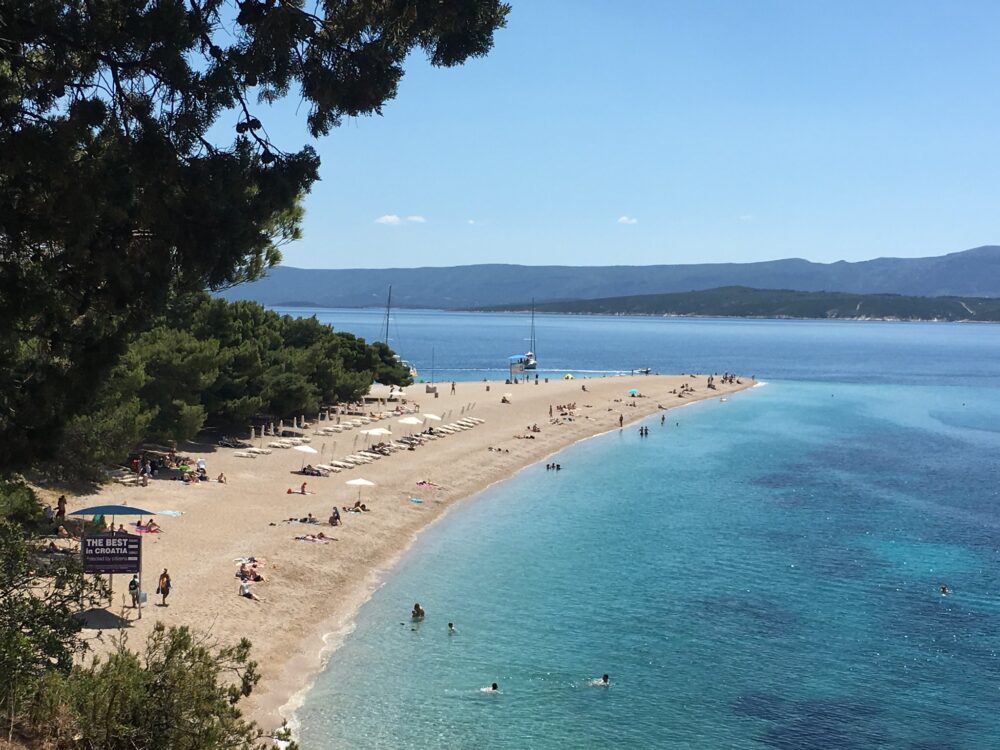
Zlatni Rat Beach (Photo: Sarah Castillo via Flickr / CC BY-SA 2.0)
Located on a small peninsula on the island of Brač in the region of Dalmatia and bordered by decades-old pine trees, Zlatni Rat is one of Croatia’s most unique beaches. Often referred to as the Golden Cape or Golden Horn, the white pebble beach’s tip has become a symbol of tourism in Croatia, with photos from above appearing in travel brochures and on postcards. What also makes the tip unusual is that it routinely changes appearance depending on currents, wind, and tide, alternating between pointing east, west and straight ahead. Two kilometres away is the town centre of Bol, which can be reached on foot via a promenade shaded by pine trees and offering sublime views of the crystal clear sea.
Murvica Beach (Bol)
Some way off the tourist radar compared to Zlatni Rat, its internationally-renowned island counterpart, Murvica Beach on the island of Brač in Central Dalmatia is pretty much the dictionary definition of the phrase ‘small but perfectly formed’. With fine gravel underfoot and flanked by huge rocks, from the beach you can see famous Hvar island in the distance and verdant vineyards nestled behind. The beach itself is pretty much bare, but for most that’s part of the magic. A gentle amble up the hill provides an alternative vantage point from which to soak up the scenery, while a short hike away is Dragon’s Cave, a mysterious monastery carved in the rock along with figures from pagan mythology and Christianity.
Punta Rata Beach (Brela)

Punta Rata Beach (Photo: Brela Tourist Board)
Over the years, the Blue Flag Punta Rata Beach has become the symbol of the Makarska Riviera and one of the region’s most famous places to visit. In fact, the white pebble beach, located in the Dalmatian coastal town of Brela, and its dense pine forest have been officially designated protected areas since 1964, ensuring the area remains blissfully untouched, other than by those who come to recline on its soft stones, take a dip in the turquoise waters, or marvel at the spectacular Brela Rock, a huge boulder covered with green pine trees which juts out from the sea. For refreshments, there’s a charming waterfront promenade lined with beach bars.
Gornja Vala (Gradac)
One of the longest beaches on the Makarska Riviera at some five kilometres, this gently sloping pebble beach, situated in the municipality of Gradac in southern Dalmatia, is lent restorative natural shade by scenic forests abundant with pine and olive trees. Also favourable are the beach’s favourable position at the foot of a mountain that protects it from the winds. More active visitors can enjoy such recreational fun as jet skiing, beach, volleyball or propelling themselves down a large inflatable water slide. There are also a number of cafes and restaurants nearby.
Stiniva Beach (Vis Island)
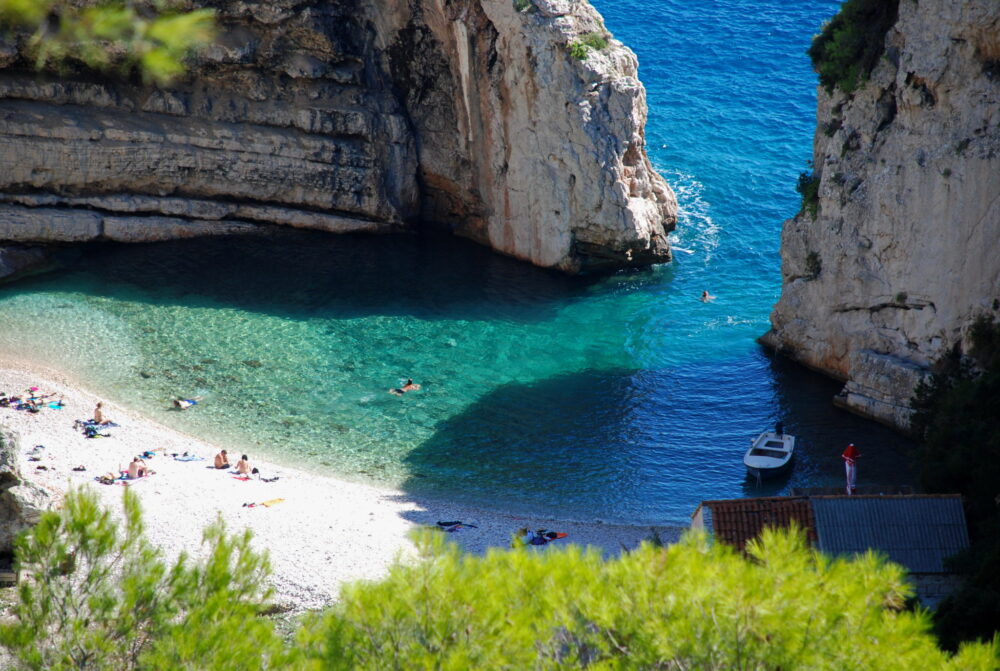
Stiniva Beach (Photo: Miroslav Vajdic via Flickr / CC BY-SA 2.0)
The farthest inhabited island off the Croatian mainland, Vis has attracted a steady stream of visitors since ancient times, with the majority drawn here today by the majestic Stiniva Beach. Indeed, in the 1960s the pebble beach, nestled in the hamlet of Žužeca at the southern end of the island, was officially designated a protected natural monument along with the enchanting cove that’s formed around it – and anyone who comes here quickly sees why. Dominated by high cliffs that form a small sea entrance to the beach, it is a sight to behold and a magical spot for swimmers who come to peer down at the ocean floor, visible some 15 metres from the surface of the crystalline waters.
Copacabana Beach (Babin Kuk)
The gorgeous city of Dubrovnik on southern Croatia’s Dalmatian coast is better known for its massive 16th-century stone walls than its beaches. Among the latter, the madly popular Banje is the most renowned, but to escape the tourist hordes then head to Copacabana. Situated in the city’s upscale Babin Kuk district on the Lapad Peninsula, the pebble beach offers superb views of the ocean, nearby islands, and the architectural wonder of the cable-stayed Dr. Franjo Tudman bridge. There’s no shortage of activities either, with kayaks, jet-skis and parasailing all popular pursuits here. Meanwhile, a sprinkling of restaurants and cafes, plus a bar serving after-hours cocktails, make the beach a popular night-time hangout, and there’s even the occasional foam party that runs into the small hours.
Šunj Beach (Lopud)
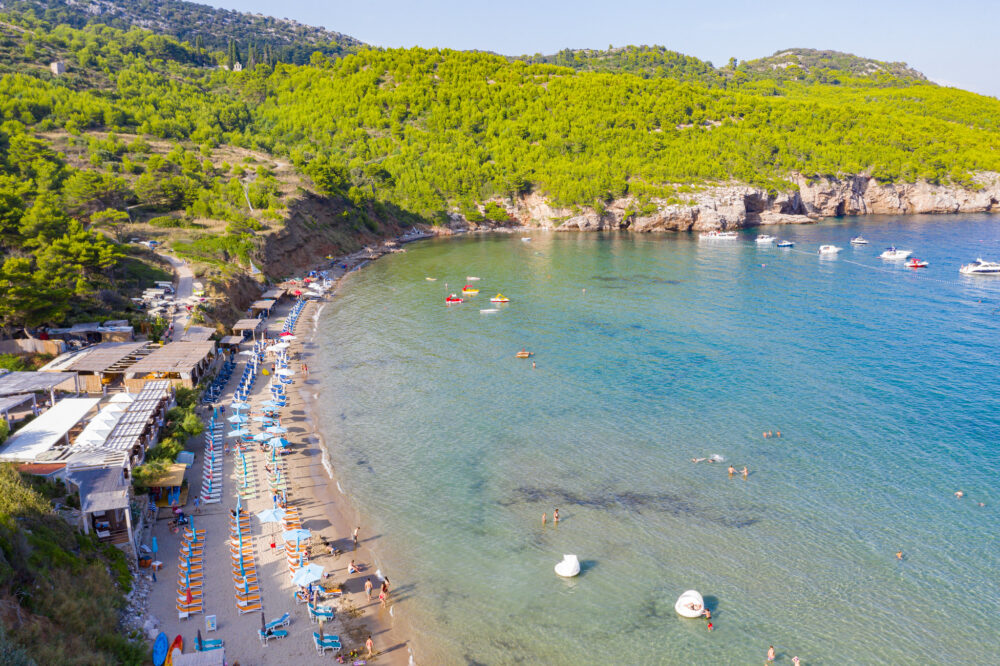
Šunj Beach (Photo: dronepicr via Flickr / CC BY 2.0)
Those who take the 25-minute walk through the pine forest from the only village on the island of Lopud are amply rewarded when they reach the sumptuous environs of Šunj Beach. Located on the south side of the island, the sandy palm-fringed beach curls around a picture-postcard horseshoe bay and makes for an ideal day-trip from nearby Dubrovnik on the mainland – especially for those who prefer sand over pebbles, with the latter former something of a rarity in this part of Croatia. But as everyone discovers on arrival, there’s far more to enjoy here than the velvety embrace of the sand, not least the barnstorming views every which way you turn.
Pasjača Beach (Popovići)
Found in the small village of Popovići, a 40-minute drive south of Dubrovnik in the rural region of Konavle, this wild rock-and-pebble beach offers a true ‘back-to-nature’ experience – with no amenities and refreshingly few crowds owing to its relative isolation. Looking out across the inky blue Adriatic, even the journey here is a pure delight, with the route passing through vineyards, olive groves, and rugged slopes dotted with old stone farmhouses and cypresses, before arriving at this exquisite coastal strip.